Guest Opinion: Who’s really to blame for 2014 wildfires?
By Dominick DellaSala, Chad Hanson and Dennis Odion in the Medford Mail Tribune
As scientists, we are alarmed by the hyperbole and misinformation contained in timber industry representative Jeremy Wuerfel’s Oct. 5 opinion piece about this year’s fire season. Fires burning across the West are in no way out of the ordinary. Even the severe ones are a natural part of mixed-conifer forests burning today the way they did historically in most places.
Naturally, most people have a visceral response to a recently burned forest, but forests need periodic fire to replenish soil nutrients and renew plant growth. Decades of scientific studies have revealed nature’s remarkable restorative powers that begin soon after a burn. There’s nothing “romantic” about this — it’s an ecological fact told in countless studies and nature documentaries. High-intensity fire patches with dead trees (“snags”) contain uniquely bio-diverse plant and animal communities that rival the more celebrated old-growth forests. But unlogged burned forests are especially rare because of post-fire logging, a commodity-driven activity.
In 2002, politicians and the timber industry claimed the nearly half-million acre Biscuit Fire, which burned in mixed intensities, was a “moonscape.” They also claimed that the forest would never come back without logging and replanting. A year later, scientists were on the ground counting far more conifer seedlings than what the Forest Service would have artificially planted. However, tractors and log skidding crushed most conifer seedlings in logged areas. To make matters worse, areas salvage logged in the 1987 Silver Fire then re-burned in the Biscuit Fire at high intensity fueled by logging slash.
Last year, the Rim Fire west of Yosemite burned within a perimeter of over 250,000 acres in mixed intensities. Large snag patches were scattered amidst areas where most trees survived. Today, even the most severely burned patches have prolific conifer seedlings and abundant woodpeckers and songbirds despite claims of catastrophe. Unfortunately, the Forest Service proposed massive salvage logging over formal objections penned by hundreds of leading scientists.
Scientific studies also have documented that fires tend to burn hotter in managed landscapes than unmanaged ones, refuting one of Wuerfel’s arguments. A Google image of the Douglas Complex fire of 2013, near Glendale, reveals that fires scorched heavily logged lands where little wildlife habitat remained, but burned in lower intensities in the late-successional reserves where abundant habitat was created for fire-dependent species.
In this year’s Oregon Gulch fire, east of the Greensprings, most of the 32,000-acre fire was hottest in logged lands previously owned by Weyerhaeuser, as confirmed by BLM Klamath Falls Resource Area scoping documents. Local residents will also attest to how the fire blew up when it hit the numerous firebomb slash-piles stacked well over 10 feet high in industrially logged areas. These observations are corroborated by satellite images dating back to the 1980s. Overall, they show that fires in our region burned mostly in mixed intensities as nature intended, but blew up in industrial tree farms.
Mr. Wuerfel’s comments about global warming and carbon dioxide are equally off-base. The published, peer-reviewed literature shows that the most protected forests in Oregon, including areas with active mixed-intensity fires, store the most atmospheric carbon. In fact, even in high-intensity fire patches, only about 2 percent of the carbon in the trees is released, typically, and the burned patches tend to absorb the highest levels of carbon if left unlogged, as forests naturally regenerate. It is logged areas, not burned forests, which are a major source of global warming pollution.
Wildfires will continue to be part of our bioregion through the next millennium and we need to fight them when they are a threat to homes. But instead of blaming forest protections for fires, we should be working together, as many communities and conservation groups already are, in reducing fuels where people live and encouraging industry to stop creating fire-prone plantations and to responsibly treat slash piles.
Finally, we agree with Mr. Wuerfel’s suggestion that readers “… take a hard look at what is actually happening to your public forests. Go out and look at the effects of these mega-fires for yourself. See what your ‘protected’ forests look like after these fires are out.” Luckily, there are many award-winning videos so anyone can see firsthand just how resilient, and rich in wildlife, post-fire habitat is.
Supplemental Links:
- International Wildlife Film Festival Award – “Disturbance”
- Photos capturing the ecological magic of severely burned forests
- Fire video from PBS
- “Forests Born of Fire” by Wild Nature Institute
- “Blacked-backed woodpeckers and fire”
- Post-fire logging slideshow
Dominick A. DellaSala, Ph.D., is chief scientist at Geos Institute and courtesy faculty at Oregon State University, and is now editing a global book on the ecosystem benefits of fire. Chad Hanson, Ph.D., is a forest and fire ecologist with the John Muir Project. Dennis Odion, Ph.D., is a plant ecologist specializing in fire who has research positions at Southern Oregon University and UC Santa Barbara.
Join the Cornerstone Network
Sign up with a monthly donation and become part of our Cornerstone Network. Network members recieve the messages posted here first, delivered directly to your inbox. Your ongoing support is the foundation of our work.

 Arsum is the Senior Adaptation and Coastal Resilience Specialist for the National Wildlife Federation’s Southcentral Region. In this role, she advances climate adaptation efforts, with a focus on nature-based approaches to address the impacts of climate change and extreme events across the Gulf region. She has authored and co-authored numerous publications on climate impact assessments and adaptation solutions. Additionally, she regularly participates in state-based coastal resilience and hazard mitigation planning across the Gulf, collaborating with regional and local stakeholders.
Arsum is the Senior Adaptation and Coastal Resilience Specialist for the National Wildlife Federation’s Southcentral Region. In this role, she advances climate adaptation efforts, with a focus on nature-based approaches to address the impacts of climate change and extreme events across the Gulf region. She has authored and co-authored numerous publications on climate impact assessments and adaptation solutions. Additionally, she regularly participates in state-based coastal resilience and hazard mitigation planning across the Gulf, collaborating with regional and local stakeholders.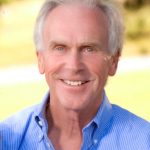 Frank is the former President of the Reinsurance Association of America. Frank currently serves on the Advisory Board of the OECD’s International Network for the Financial Management of Large-Scale Disasters, the RAND Center on Catastrophic Risk Management and Compensation, and the University of Cincinnati’s Carl H. Lindner III Center for Insurance and Risk Management Advisory Board.
Frank is the former President of the Reinsurance Association of America. Frank currently serves on the Advisory Board of the OECD’s International Network for the Financial Management of Large-Scale Disasters, the RAND Center on Catastrophic Risk Management and Compensation, and the University of Cincinnati’s Carl H. Lindner III Center for Insurance and Risk Management Advisory Board.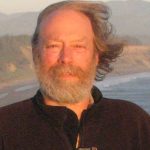 Jim is a multilingual world traveler. Based in Bavaria during the 1970s, Jim spent most of this period in India, Afghanistan and Nepal, where he founded and operated a charitable medical clinic serving Tibetan Refugees. He settled in Oregon in 1983 on a forested ranch in the Umpqua National Forest.
Jim is a multilingual world traveler. Based in Bavaria during the 1970s, Jim spent most of this period in India, Afghanistan and Nepal, where he founded and operated a charitable medical clinic serving Tibetan Refugees. He settled in Oregon in 1983 on a forested ranch in the Umpqua National Forest.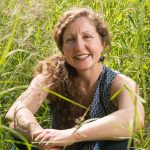 Dr. Micah Hahn is an Associate Professor of Environmental Health in the Institute for Circumpolar Health Studies at the University of Alaska-Anchorage. She received her joint PhD in Epidemiology / Environment and Resources from the University of Wisconsin-Madison and her MPH in Global Environmental Health from Emory University. Subsequently, she was a postdoctoral fellow for the CDC Climate and Health Program, and in this position worked collaboratively with the CDC Division of Vector-borne Diseases and the National Center for Atmospheric Research. Her research focuses on understanding the health impacts of climate change and working with communities to develop locally-relevant adaptation and resilience-building strategies. Dr. Hahn is also on the Management Team of the Alaska Climate Adaptation Science Center.
Dr. Micah Hahn is an Associate Professor of Environmental Health in the Institute for Circumpolar Health Studies at the University of Alaska-Anchorage. She received her joint PhD in Epidemiology / Environment and Resources from the University of Wisconsin-Madison and her MPH in Global Environmental Health from Emory University. Subsequently, she was a postdoctoral fellow for the CDC Climate and Health Program, and in this position worked collaboratively with the CDC Division of Vector-borne Diseases and the National Center for Atmospheric Research. Her research focuses on understanding the health impacts of climate change and working with communities to develop locally-relevant adaptation and resilience-building strategies. Dr. Hahn is also on the Management Team of the Alaska Climate Adaptation Science Center. Michael is a former Founding Principal of Resilient Cities Catalyst, a global non-profit helping cities and their partners tackle their toughest challenges. He is currently the Executive Director of Climate Resilience Academy at the University of Miami.
Michael is a former Founding Principal of Resilient Cities Catalyst, a global non-profit helping cities and their partners tackle their toughest challenges. He is currently the Executive Director of Climate Resilience Academy at the University of Miami.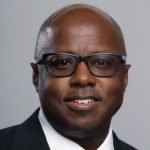 Dr. Quintus Jett is a consultant, educator, and strategist for public causes. He has a doctorate in Organizations & Management from Stanford University, and a two-decade faculty career which spans schools, departments, and programs of business, engineering, liberal studies, divinity, and public and nonprofit management. Following Hurricane Katrina in 2005, Dr. Jett launched a volunteer project in New Orleans, which enlisted residents, students from over a dozen colleges and universities, and hundreds of others to field map the city’s Gentilly district, Lower Ninth Ward, and New Orleans East. Dr. Jett is an innovator in higher education, bridging the divide between academic research and the other priorities of the modern university, including student access and diversity, community engagement, and providing foundations for life-long learning in today’s rapidly changing world.
Dr. Quintus Jett is a consultant, educator, and strategist for public causes. He has a doctorate in Organizations & Management from Stanford University, and a two-decade faculty career which spans schools, departments, and programs of business, engineering, liberal studies, divinity, and public and nonprofit management. Following Hurricane Katrina in 2005, Dr. Jett launched a volunteer project in New Orleans, which enlisted residents, students from over a dozen colleges and universities, and hundreds of others to field map the city’s Gentilly district, Lower Ninth Ward, and New Orleans East. Dr. Jett is an innovator in higher education, bridging the divide between academic research and the other priorities of the modern university, including student access and diversity, community engagement, and providing foundations for life-long learning in today’s rapidly changing world. Scott is Monfort Professor of Atmospheric Science at Colorado State University. He has written about 100 publications in the peer-reviewed climate literature, is a former editor of the Journal of Climate, and served for five years as founding Science Chair of the North American Carbon Program.
Scott is Monfort Professor of Atmospheric Science at Colorado State University. He has written about 100 publications in the peer-reviewed climate literature, is a former editor of the Journal of Climate, and served for five years as founding Science Chair of the North American Carbon Program. Linda has many years of experience in disaster preparedness and resilience. She has been an elected official on the Linn County Iowa Board of Supervisors, Chair of the Metropolitan Planning Organization, the East Central Iowa Council of Governments, the statewide Mental Health Developmental Disability and the Linn County Board of Health. Langston is a former president of the National Association of Counties (2013-2014).
Linda has many years of experience in disaster preparedness and resilience. She has been an elected official on the Linn County Iowa Board of Supervisors, Chair of the Metropolitan Planning Organization, the East Central Iowa Council of Governments, the statewide Mental Health Developmental Disability and the Linn County Board of Health. Langston is a former president of the National Association of Counties (2013-2014).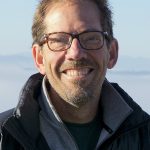 Ken works with families and organizations as a mediator, organizational consultant, trainer and facilitator. Along with his passion for helping people prepare for and reduce climate change, Ken also volunteers as a mediator through Mediation Works and is passionate about supporting youth through mentoring with Boys to Men of Southern Oregon.
Ken works with families and organizations as a mediator, organizational consultant, trainer and facilitator. Along with his passion for helping people prepare for and reduce climate change, Ken also volunteers as a mediator through Mediation Works and is passionate about supporting youth through mentoring with Boys to Men of Southern Oregon. Matthew is a retired high school teacher who was once honored as Oregon High School Social Studies Teacher of the Year. Before his teaching career he was in the restaurant business in Portland. He is also a lawyer who has been a member of the Oregon State Bar Association since 1980.
Matthew is a retired high school teacher who was once honored as Oregon High School Social Studies Teacher of the Year. Before his teaching career he was in the restaurant business in Portland. He is also a lawyer who has been a member of the Oregon State Bar Association since 1980. Andrea is the Resilience Policy Advisor for the North Carolina Office of Recovery and Resiliency. She works across state agencies and with local governments to increase the state’s resilience to the impacts of climate change.
Andrea is the Resilience Policy Advisor for the North Carolina Office of Recovery and Resiliency. She works across state agencies and with local governments to increase the state’s resilience to the impacts of climate change.